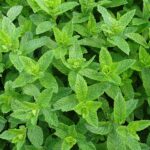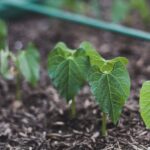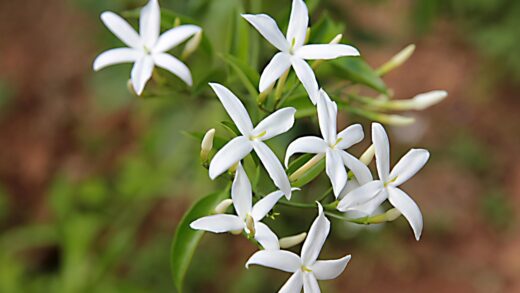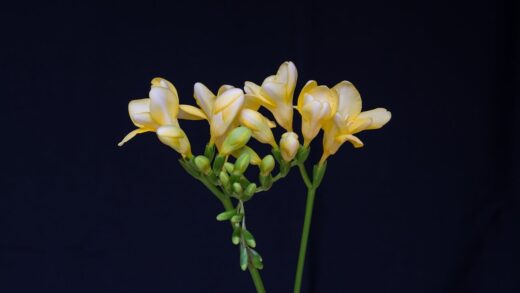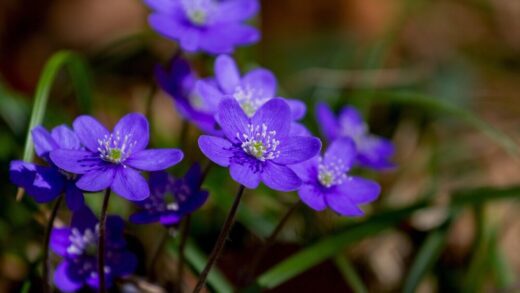Understanding the specific water needs of French lavender is fundamental to its cultivation, as improper irrigation is the most frequent cause of its demise. Originating from the arid, sun-baked landscapes of the Mediterranean, this plant has evolved to be remarkably drought-tolerant once it becomes established. Its silvery foliage and extensive root system are natural adaptations designed to conserve moisture and seek it out from deep within the soil profile. Therefore, the guiding principle for watering French lavender is to err on the side of dryness, as the plant is far more likely to suffer from the consequences of overwatering than from a lack of moisture.
For a newly planted French lavender, the initial watering strategy is crucial for encouraging the development of a deep and resilient root system. During its first growing season, the plant requires more consistent moisture than an established specimen. This means providing a deep and thorough watering once or twice a week, depending on your climate and soil type. The goal is to saturate the root zone and then allow the top few inches of soil to dry out completely before watering again, a cycle that promotes strong root growth and acclimatizes the plant to drier conditions.
Once the lavender has successfully navigated its first year and is considered established, its water requirements decrease dramatically. In many temperate climates, natural rainfall is often sufficient to meet the plant’s needs, especially for those planted in the ground. During prolonged periods of drought or extreme summer heat, however, supplemental irrigation will be necessary. In these situations, a deep soaking every two to three weeks is generally more beneficial than frequent, shallow watering, as it encourages the roots to remain deep in the cooler, moister soil layers.
The most critical mistake a gardener can make is to treat French lavender like a thirsty perennial, providing it with daily water. This approach inevitably leads to waterlogged soil, which deprives the roots of oxygen and creates the perfect environment for fungal pathogens to thrive, resulting in fatal root rot. Learning to read the plant and the soil, rather than adhering to a rigid schedule, is the key to mastering the art of watering this Mediterranean native. A simple touch test of the soil is your most reliable guide.
Understanding the mediterranean origins and drought tolerance
To truly grasp the water requirements of French lavender, one must look to its native habitat. It hails from the coastal regions of the Mediterranean, an area characterized by long, hot, dry summers and mild, wet winters. The soils in this region are typically rocky, sandy, and free-draining, meaning that even during the rainy season, water moves quickly through the soil profile and does not stagnate around the roots. These environmental factors have shaped the plant’s evolution, resulting in a species that is exceptionally well-adapted to survive, and indeed thrive, in dry conditions.
More articles on this topic
The plant’s physical characteristics are a testament to its drought-tolerant nature. The narrow, silvery-grey leaves are covered in fine hairs, which help to reduce water loss through transpiration by trapping a layer of humid air close to the leaf surface and reflecting the sun’s intense rays. Furthermore, French lavender develops a deep and extensive root system, which includes a prominent taproot. This allows the plant to access moisture from well below the soil surface, where water is more readily available during dry periods.
This inherent drought tolerance means that once a French lavender plant is established, it requires very little supplemental irrigation. It is perfectly adapted to a cycle of hydration followed by a period of drying out. Constant moisture around the crown and roots is unnatural for the plant and signals distress, making it vulnerable to a host of problems. The gardener’s role is to mimic this natural wet-dry cycle and resist the temptation to overwater, even when the summer sun is at its peak.
It is also important to note that the plant’s aromatic oils, for which lavender is famous, become more concentrated in response to dry, sunny conditions. Overwatering can dilute the production of these essential oils, resulting in a plant that is less fragrant. Therefore, by providing the leaner, drier conditions that the plant prefers, you are not only ensuring its health and survival but also enhancing the very quality that makes it so desirable in the garden.
Watering newly planted lavender
The watering regimen for a newly planted French lavender is distinctly different from that of an established one, as this initial period is all about root system development. For the first few months after planting in the spring or early summer, the young plant’s roots are still confined to the original root ball and have not yet ventured out into the surrounding soil. During this critical establishment phase, the plant is more vulnerable to drying out and requires more frequent and consistent watering to support its growth.
More articles on this topic
Immediately after planting, give the lavender a deep and thorough soaking to settle the soil and eliminate air pockets around the root ball. For the first few weeks, you should check the soil moisture every few days. A good rule of thumb is to water deeply once the top one to two inches of soil have become dry to the touch. This typically translates to watering once or twice per week in average weather conditions, but may need to be adjusted based on heat, wind, and rainfall.
The goal during this period is to provide enough moisture to prevent stress and encourage root growth without creating soggy conditions. Deep watering is key; a light sprinkle only moistens the surface and encourages shallow rooting, which will make the plant less drought-tolerant in the long run. By watering thoroughly and then allowing a drying-out period, you encourage the roots to grow deeper in search of residual moisture, building the foundation for a strong, self-sufficient plant.
As the plant progresses through its first growing season, you can gradually begin to extend the interval between waterings. By late summer or early autumn, the lavender should have developed a more extensive root system and you can transition towards the less frequent watering schedule appropriate for an established plant. This gradual tapering of water is an essential part of hardening off the plant and preparing it for the drier conditions it is naturally adapted to handle.
Irrigation strategies for established plants
Once a French lavender plant has successfully completed its first full year in the garden, it is considered established, and its irrigation needs change significantly. The primary strategy for watering mature plants is “deeply and infrequently.” This method most closely mimics the natural rainfall patterns of the Mediterranean, where periods of dryness are punctuated by occasional, thorough drenchings. This approach strengthens the plant by encouraging its roots to remain deep in the soil profile.
The most reliable way to determine when to water an established lavender is to ignore the calendar and assess the soil. Insert your finger or a small trowel into the soil to a depth of at least three to four inches. If the soil feels cool and moist at this depth, there is no need to water. If it feels dry, it is time to provide a deep soaking. In many regions, this might mean you only need to provide supplemental water a few times during the hottest, driest parts of the summer.
When you do water, do it effectively. Use a soaker hose placed at the base of the plant or a watering wand to apply water slowly and directly to the root zone for an extended period. This allows the water to percolate deep into the soil rather than running off the surface. A slow, deep watering ensures that the entire root system is hydrated and provides a reservoir of moisture that the plant can draw upon for several weeks. Avoid using overhead sprinklers, which can wet the foliage and increase the risk of fungal diseases.
It is also important to consider your soil type when devising an irrigation strategy. Sandy soils drain very quickly and will require more frequent watering than loam or amended clay soils, which retain moisture for longer periods. Similarly, a plant situated on a slope will lose water to runoff more quickly than one on level ground. Observing your specific garden conditions and how your plant responds will help you fine-tune your watering practices for optimal health.
The dangers of overwatering
Overwatering is the single most common and destructive mistake made in the cultivation of French lavender. The plant’s root system is exquisitely adapted to dry, well-aerated soil and simply cannot tolerate being in constantly wet or soggy conditions. When the soil is saturated with water, the air pockets that roots need for respiration are filled, effectively suffocating them. This lack of oxygen begins to damage and kill the fine root hairs that are responsible for absorbing water and nutrients.
The initial signs of overwatering can be confusingly similar to those of underwatering. The plant’s leaves may begin to turn yellow, starting with the lower ones, and the entire plant may appear to be wilting or drooping. This is because the damaged root system is no longer able to effectively take up water, so the plant is dehydrating even though it is sitting in wet soil. Many well-intentioned gardeners see these symptoms and mistakenly apply more water, which only exacerbates the problem and hastens the plant’s decline.
Persistently wet conditions also create the ideal breeding ground for soil-borne fungal pathogens, such as Phytophthora, which cause root rot. Once these pathogens take hold in a weakened, oxygen-deprived root system, the damage is often irreversible. The roots will turn brown, soft, and mushy, and the rot will progress up into the crown of the plant, causing the entire plant to collapse. By the time the symptoms are severe at the foliage level, the damage below ground is usually extensive.
To avoid the perils of overwatering, a conservative approach is always best. It is far easier to revive a slightly underwatered lavender than it is to save one suffering from root rot. Always check the soil moisture before reaching for the hose, ensure your planting site has excellent drainage, and remember that for this particular plant, less is truly more when it comes to water. Choosing the right location and soil from the outset is the most effective preventative measure against this common problem.
Adjusting watering for containers and climate
Growing French lavender in containers requires a different watering approach than for plants in the ground, as pots have a limited soil volume that dries out much more quickly. The material of the pot also plays a role; unglazed terracotta pots are porous and lose moisture through their sides, while plastic or glazed ceramic pots retain moisture for longer. During the heat of summer, a container-grown lavender may need to be watered every two to three days, or even daily in very hot, windy conditions.
Despite the need for more frequent watering, the core principle of preventing waterlogging remains paramount for container plants. Ensure the pot has ample drainage holes, and use a gritty, fast-draining potting mix, such as one formulated for cacti and succulents. Before watering, always perform the finger test by inserting your finger into the soil up to the second knuckle. If the soil feels dry at that depth, it is time to water thoroughly until you see excess water running out of the drainage holes.
Your local climate is another major factor that should influence your watering schedule. Gardeners in hot, arid regions with sandy soil will naturally need to water more often than those in cooler, more humid climates with heavier soil. Similarly, a garden that experiences regular summer rainfall may require very little supplemental irrigation at all. Pay attention to your local weather patterns and adjust your watering practices accordingly, rather than following a one-size-fits-all rule.
Seasonal changes also necessitate adjustments. In the spring, as the plant is actively growing, it will require more consistent moisture. During the peak of summer, its needs will be at their highest. As autumn arrives and the weather cools, you should significantly reduce the frequency of watering to help the plant transition into dormancy. For container plants being overwintered indoors or in a garage, watering should be reduced to a bare minimum—perhaps only once a month—just enough to keep the roots from completely desiccating.










